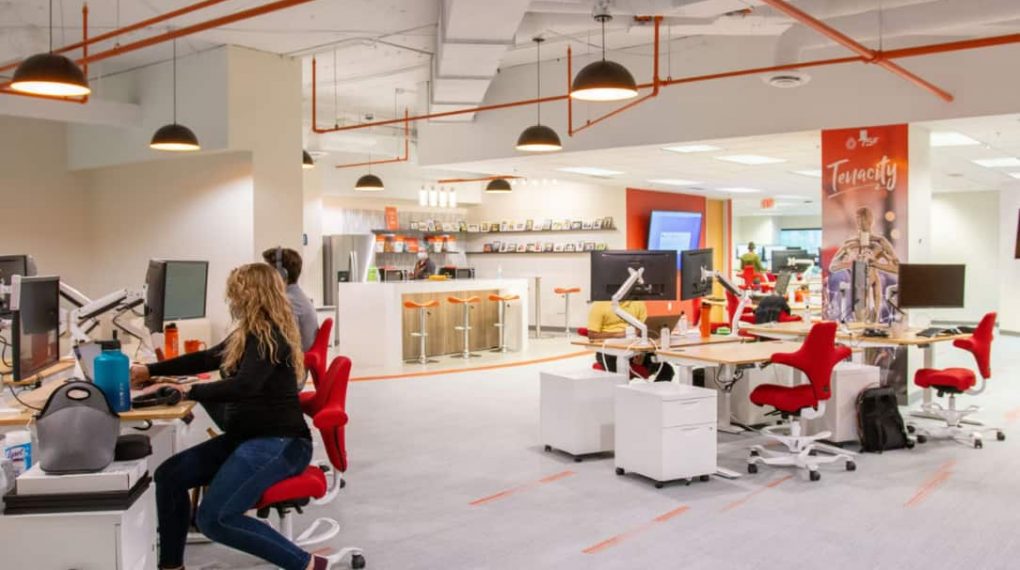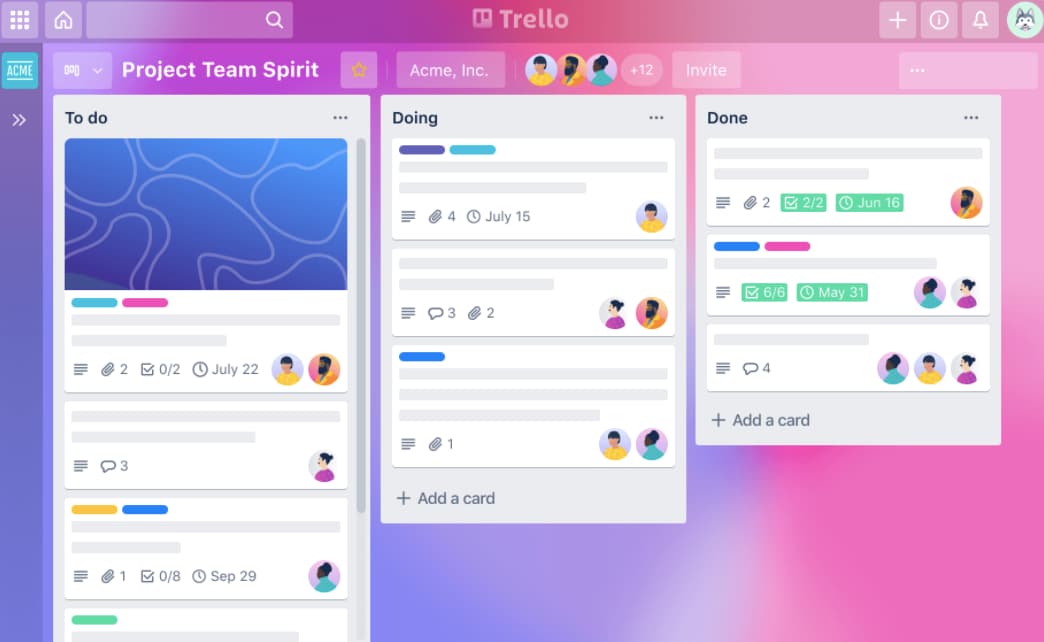When it comes to starting a new business, designing the perfect office space is often overlooked.
However, how you set up your workspace can significantly impact your team’s productivity, collaboration, and overall success.
This guide’ll walk you through the essential steps to create an office environment that meets your startup’s unique needs while fostering growth and innovation.
How to Design an Office Space for a Startup Business?

Assess Your Startup’s Needs
Before you start designing your office space, it’s crucial to evaluate your startup’s specific requirements.
Consider the following factors:
- Team size and projected growth: Determine how many employees you currently have and anticipate how much your team might grow shortly. This will help you choose an office space that can accommodate your current and future needs.
- Nature of your business: Think about the type of work your startup does and what kind of environment would best support your team’s activities. For example, a creative agency might benefit from an open, collaborative space, while a law firm may require more private offices.
- Budget and resources: Assess your financial resources and set a realistic budget for your office design project. Keep in mind that you may need to prioritize certain elements over others based on your available funds.
- Location and accessibility: Choose a location that is easily accessible for your team and clients. Consider factors such as public transportation, parking, and proximity to amenities like restaurants and shops.
Create a Functional Layout
The layout of your office space should be designed to support your team’s workflow and promote efficiency.
Here are some key elements to consider:
- Open floor plan vs. traditional office layout: Decide whether an open floor plan or a more traditional layout with private offices best suits your startup’s needs. Open floor plans can foster collaboration and communication, while private offices provide a quiet space for focused work.
- Collaborative spaces and meeting rooms: Include dedicated areas for team meetings, brainstorming sessions, and client presentations. These spaces should be equipped with the necessary tools and technology to facilitate productive discussions.
- Private areas for focused work: Provide quiet spaces where employees can work without distractions. This can include private offices, soundproofed booths, or designated quiet zones.
- Reception and waiting areas: Create a welcoming reception area where clients and visitors can feel comfortable while waiting. This space should reflect your brand identity and set the tone for your office environment.
- Storage and utility spaces: Don’t forget to allocate adequate space for storage, filing, and office supplies. Keep these areas organized and easily accessible to keep your workspace clutter-free.
Incorporate Ergonomics and Comfort
The comfort and well-being of your employees should be a top priority when designing your office space.
Consider the following factors:
- Choosing the right furniture: Invest in ergonomic desks, chairs, and other furniture that promote good posture and reduce the risk of physical strain. Look for adjustable options that can accommodate different body types and working styles.
- Proper lighting and temperature control: Ensure that your office has adequate natural and artificial lighting to reduce eye strain and improve mood. Implement a temperature control system that allows employees to adjust the thermostat to their comfort level.
- Acoustics and noise reduction: Use sound-absorbing materials like carpets, curtains, and acoustic panels to minimize noise distractions. Consider installing white noise machines or designating quiet zones for employees who need a peaceful environment to concentrate.
- Air quality and ventilation: Maintain good air quality by regularly cleaning and maintaining your HVAC system. Incorporate plants throughout the office to help purify the air and boost oxygen levels.
Reflect on Your Brand Identity
Your office space should be an extension of your brand identity, reflecting your startup’s values, mission, and personality.
Here’s how you can infuse your brand into your workspace:
- Choosing a color scheme: Select a color palette that aligns with your brand guidelines. Use these colors consistently throughout your office, from the walls and furniture to the accessories and décor.
- Incorporating your logo and branding elements: Display your company logo prominently in your reception area and throughout the office. Use branded elements like wall graphics, framed posters, and custom signage to reinforce your brand identity.
- Displaying your company’s mission and values: Showcase your startup’s mission statement and core values in high-traffic areas like the reception or breakroom. This helps keep your team focused on your shared goals and reminds visitors what your company stands for.
- Creating a unique and memorable office environment: Add personal touches that reflect your startup’s culture and personality. This can include fun artwork, quirky furniture pieces, or themed meeting rooms that inspire creativity and innovation.
Integrate Technology
In today’s digital age, technology is an essential component of any modern office space.
Make sure your workspace is equipped with the following:
- Reliable and fast internet connection: Invest in a high-speed internet plan and a robust Wi-Fi network that can support your team’s online activities. Consider installing ethernet ports for employees who require a wired connection.
- Adequate power outlets and charging stations: Provide ample power outlets and charging stations throughout the office to keep devices powered up and running smoothly. Consider installing USB ports in meeting rooms and common areas for added convenience.
- Conference room technology: Equip your meeting rooms with the latest video conferencing tools, large monitors or projectors, and high-quality audio systems to facilitate seamless virtual collaboration with remote team members or clients.
- Security systems and access control: Implement a secure access control system to protect your office space and sensitive information. This can include key card entry, biometric scanners, or video surveillance cameras.
Encourage Employee Well-being
A healthy and happy workforce is a productive one. Incorporate elements that promote employee well-being and work-life balance:
- Breakout areas and relaxation spaces: Create designated areas where employees can take breaks, socialize, or unwind. This can include a comfortable lounge area with sofas and armchairs, a game room with table tennis or foosball, or an outdoor patio with seating.
- Office plants and greenery: Incorporate plants and greenery throughout the office to improve air quality, reduce stress, and boost mood. Consider creating a living wall or adding potted plants to desks and common areas.
- Ergonomic furniture and equipment: Invest in ergonomic furniture and equipment like standing desks, adjustable monitors, and ergonomic keyboards to reduce the risk of physical strain and promote healthy posture.
- Promoting a healthy work-life balance: Encourage employees to take regular breaks, step away from their desks, and engage in physical activity. Consider offering wellness programs like yoga classes, meditation sessions, or gym memberships to support your team’s physical and mental health.
Plan for Flexibility and Growth
As your startup grows and evolves, your office space should be able to adapt to your changing needs.
Keep these tips in mind when planning for flexibility and growth:
- Modular and adaptable furniture: Choose furniture that can be easily reconfigured or moved around as your team expands or your workspace needs to change. Modular desks, movable partitions, and flexible seating options can help you make the most of your space.
- Scalable design: Plan your office layout with future growth in mind. Leave room for additional workstations, meeting rooms, or collaborative spaces that can accommodate new hires or changing work patterns.
- Multipurpose spaces: Create versatile spaces that can serve multiple functions. For example, a meeting room can double as a training area or a quiet workspace when not in use for group discussions.
- Considering future expansion possibilities: When choosing an office location, consider the potential for future expansion. Look for buildings with additional space available for lease or purchase, or consider a flexible lease agreement that allows you to scale up or down as needed.
More Business Guides:
- Start Your Business With These Models
- How to Start a Trucking Company With No Money
- Business Challenges New Entrepreneurs Face
Conclusion:
Designing an office space for your startup business is a significant investment in your team’s success.
By assessing your needs, creating a functional layout, incorporating ergonomics and comfort, reflecting your brand identity, integrating technology, encouraging employee well-being, and planning for flexibility and growth, you can create a workspace that inspires productivity, collaboration, and innovation.
Remember, your office environment is more than just a physical space – it’s an extension of your startup’s culture and values.
By prioritizing the needs and well-being of your employees, you can foster a positive and engaging workplace that attracts top talent and drives your business forward.
As you embark on your office design journey, don’t be afraid to think outside the box and infuse your startup’s unique personality into the space.
With careful planning and attention to detail, you can create an office environment that sets your startup up for long-term success.



